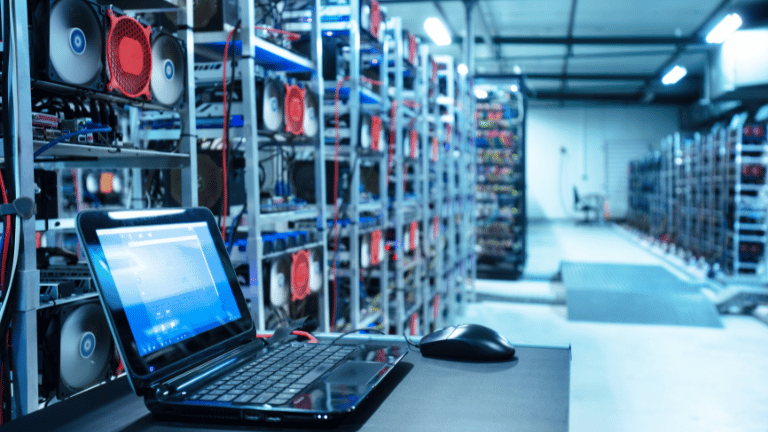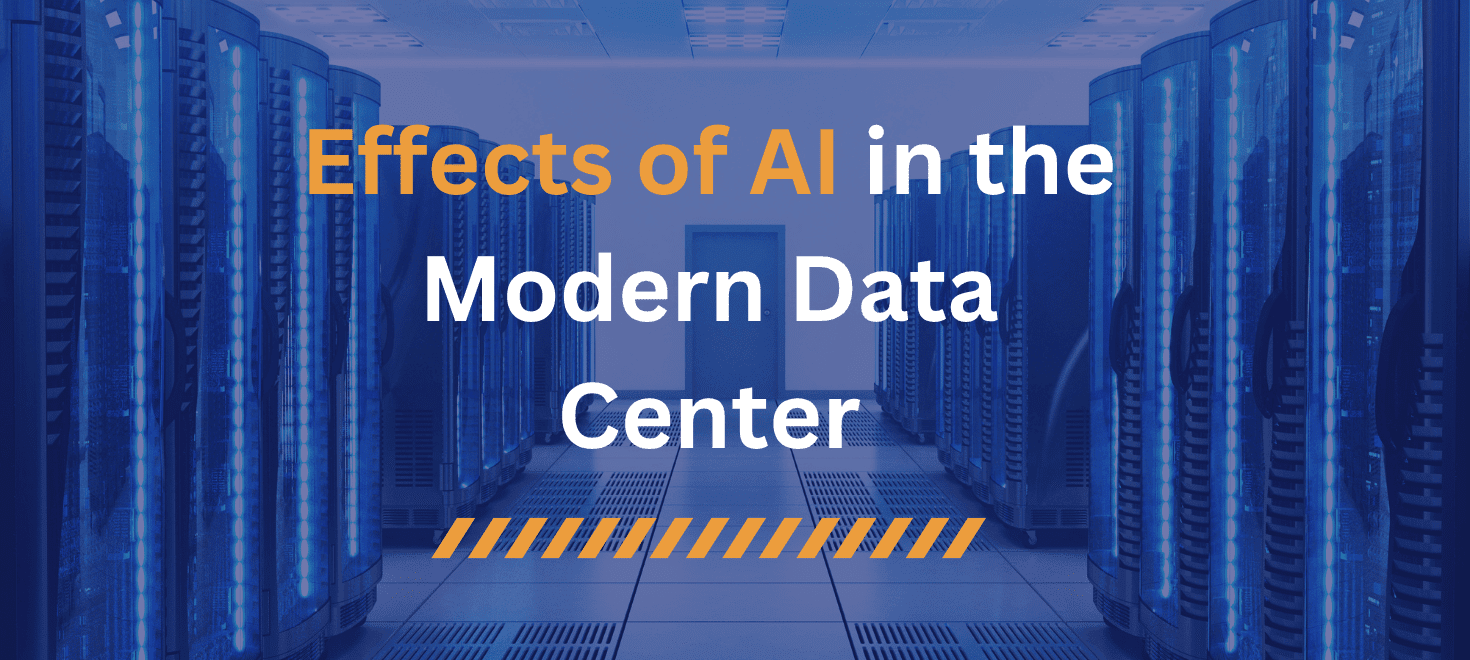While there is no shortage of articles highlighting how AI is transforming data center operations through predictive analytics, automation, and efficiency improvements, there is noticeably less coverage on the operational and infrastructure impacts of deploying AI within the data center itself. Topics such as increased power consumption, heat generation, cooling demands, and datacenter architecture changes often receive far less attention, despite being critical considerations for organizations implementing AI at scale. Many are eager to leverage AI for advanced network solutions and cloud solutions, but the foundational impact on the physical data center environment, including its network security and overall cybersecurity posture, cannot be overlooked.
The Data Center Environmental Challenge
I have read multiple articles that state that AI is poised to drive a 160 to 200% increase in power demands for a data center. One reason for this is that a single AI query can consume 10 times more electricity to process than a simple internet search. While future optimizations may help reduce energy consumption, those advancements are likely still years away. Considering these factors, let’s examine the foundational hardware architecture supporting AI. This isn’t just about adding more servers; it’s about a fundamental shift in how data centers consume and manage energy.
AI workloads tend to rely more heavily on GPUs than CPUs, primarily due to the GPUs’ ability to perform parallel processing. While a typical CPU consumes between 65 to 150 watts, a GPU can range from 30 up to 1000 watts, representing a significant difference in power consumption. When multiple GPUs are installed in a single server, the resulting heat output can be substantial. This concentration of power and heat in specific areas of the data center creates new challenges for traditional cooling designs and power distribution.
In AI-enabled data centers, servers are often installed in racks that utilize shared GPU pools across multiple systems, creating significantly higher heat density than traditional setups. This increase in thermal output, driven by GPUs and other accelerators require a more robust and efficient cooling solutions. Traditional air-cooling methods are frequently inadequate, prompting the adoption of advanced technologies such as liquid cooling. As of this writing, most hardware vendors are either in the early design stages or preparing to launch their first generation of liquid cooled GPU servers, which will still require targeted airflow from HVAC platforms. The transition to liquid cooling itself represents a major shift in data center design and operations, impacting everything from plumbing to maintenance procedures and potentially requiring specialized managed IT support.

The Shift to Advanced Cooling
Traditional HVAC systems that deliver cool air at approximately 68∘F (21∘C) are no longer sufficient for most data centers, especially given the growing demands of modern workloads like those found in cloud computing environments hosted within these facilities. In response to this challenge, I explored a leading manufacturer that has advanced the process with AI-enabled HVAC solutions. Their documentation recommends equipping each on-premise AI-optimized server rack with eight temperature sensors, enabling precise thermal management within each rack. This allows for targeted cooling, improved airflow efficiency, and intelligent air recirculation, such as repurposing heat for other areas or drawing in cooler external air when conditions allow. The overarching goal of these AI-driven HVAC systems is to reduce energy consumption, lower cooling costs, and minimize the data center’s carbon footprint. This intelligent environmental management is becoming a critical component of modern data center solutions.
Given these power differentials, accurately calculating power requirements becomes critical during the planning and design phase. Organizations must account not only for the total wattage per server, factoring in multiple high-wattage GPUs, but also for the cumulative impact across racks, cooling infrastructure, and backup systems (including robust cloud backup strategies for offsite data security) to ensure consistent, reliable operation under AI intensive workloads. Failure to do so can lead to power shortages, overheating, and ultimately, costly downtime, undermining the very AI initiatives these systems are meant to support. This detailed planning often benefits from IT consulting services with expertise in data center power and cooling.
Preparing your existing infrastructure for these significant environmental and power shifts is no small undertaking. If you’re looking to understand the key drivers and benefits of upgrading your facility, our eBook, “6 Reasons to Modernize Your Data Center Network,” offers valuable insights into creating a future-ready environment capable of supporting advanced technologies like AI.
Networking for AI in the Data Center
When bringing AI into data centers, one of the most critical considerations is building an infrastructure that can efficiently handle high-performance computing (HPC) and large-scale data transfers with low latency. This is where robust enterprise network solutions become paramount. There’s considerable discussion comparing Ethernet versus InfiniBand, but the right solution depends on your specific environment. A proof of concept (PoC) is a smart step to evaluate which technology best supports your objectives around performance and scalability. This evaluation should also consider how the network integrates with existing cloud infrastructure and any plans for hybrid cloud deployments.
Let’s take a moment to compare these two technologies. InfiniBand was originally developed to overcome several limitations of Ethernet, particularly in high-performance computing environments. However, Ethernet has evolved significantly and can now match InfiniBand in terms of bandwidth, latency, and reliability. Both technologies support up to 800Gbps of bandwidth, but Ethernet offers broader capabilities overall. While InfiniBand holds about 5% of the ultra high-performance networking market, many of its current use cases could realistically be handled by modern Ethernet solutions. The choice often comes down to specific workload characteristics, existing infrastructure, vendor ecosystems, and long-term cost implications, including IT procurement considerations for new hardware.
Scaling AI Networks: Up, Out, and Interconnected
From an architectural standpoint, a key decision involves choosing between scaling up or scaling out. Scaling up focuses on increasing the processing power within a single device, such as utilizing more powerful GPUs or AI-optimized systems, whereas scaling out involves interconnecting multiple GPUs or nodes. This is often achieved through high-speed interconnects like NVIDIA NVLink or RDMA technologies, depending on the overall design and workload distribution strategy. The network security implications of these high-speed interconnects also need careful consideration to prevent bottlenecks from becoming security vulnerabilities. This might involve specialized network security solutions or consulting with cybersecurity companies.
As these technologies continue to advance, organizations must remain adaptable and conduct real-world evaluations, such as proof-of-concept trials, to validate initial designs and identify the best-fit solutions for AI workloads, data models, high-performance computing, data flow, and system interconnectivity. This iterative approach helps mitigate risks associated with large-scale deployments and ensures the chosen cloud computing services or on-premise solutions deliver the expected performance.
Beyond raw speed, the network must also be intelligent and secure. AI workloads often involve massive datasets, making data security and efficient data transfer critical. This means looking at solutions that offer not just high bandwidth but also advanced traffic management, quality of service (QoS) for AI traffic, and integration with existing cloud security frameworks, especially if data is moving between on-premise data centers and cloud storage. A robust network is the backbone of any successful AI deployment within the data center.
How Can KNZ Help?
KNZ Solutions can help organizations navigate the complexity of selecting and implementing the right high-performance networking technology and overall datacenter architecture for their AI and data center environments. With deep expertise in infrastructure design, workload optimization, and emerging technologies, KNZ assists clients in evaluating options like InfiniBand and Ethernet through structured proof-of-concept engagements. Our team works closely with stakeholders to assess performance, scalability, and integration requirements, including considerations for cybersecurity services and managed IT services provider integration, ensuring that the selected solution aligns with both technical needs and long-term business goals. From design to deployment, KNZ delivers vendor-neutral guidance and practical engineering support that enables organizations to future-proof their infrastructure and maximize return on investment. We understand the challenges, from IT procurement services to implementing complex cloud migration strategies, and are here to provide the IT consulting services you need to succeed. Part of that success involves understanding your organization’s current AI readiness. Before embarking on significant infrastructure changes for AI, it’s crucial to know where you stand. We encourage you to take our AI-Readiness Quiz to gain valuable insights into your preparedness and identify key areas for focus.

Chris Price is an experienced executive deeply committed to nurturing and empowering team members to realize their fullest potential. My passion lies in technology thought leadership, and my career has been dedicated to providing guidance and leadership in aligning technology with business objectives. In recent years, we’ve observed a significant evolution in technology, particularly in digital solutions, which have the potential to differentiate businesses and confer a competitive advantage in their respective industries. In this new era of digital business, organizations must embrace transformation. Within my team, we possess the expertise to guide organizations through the disruptions brought by digital innovations, offering innovative ideas and state-of-the-art technology to navigate these changes effectively.






